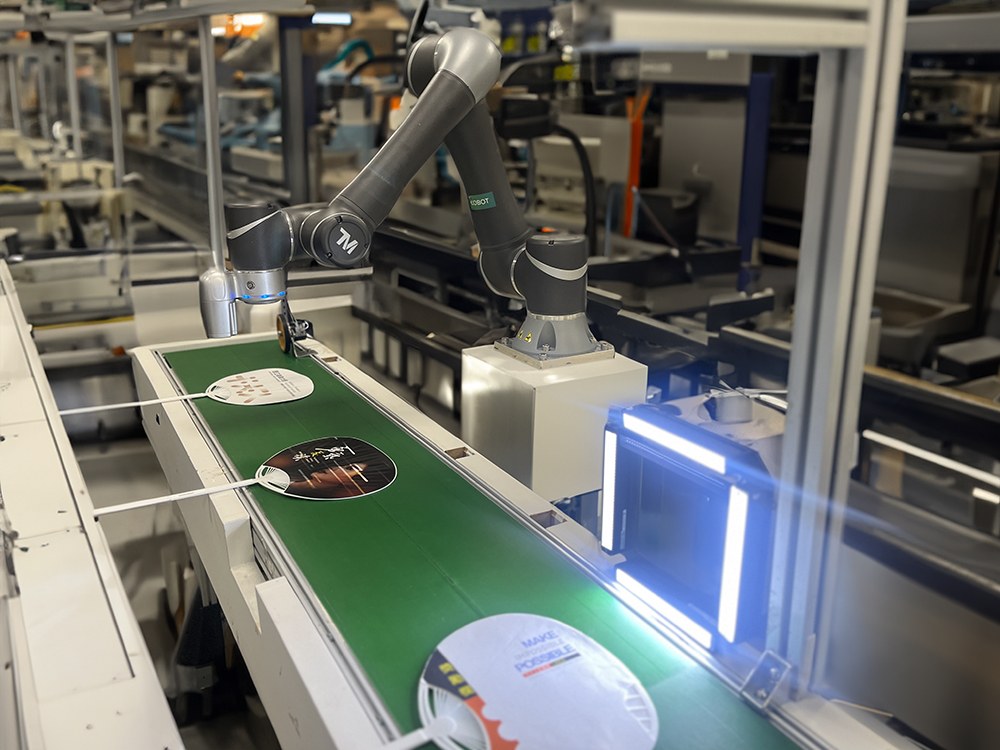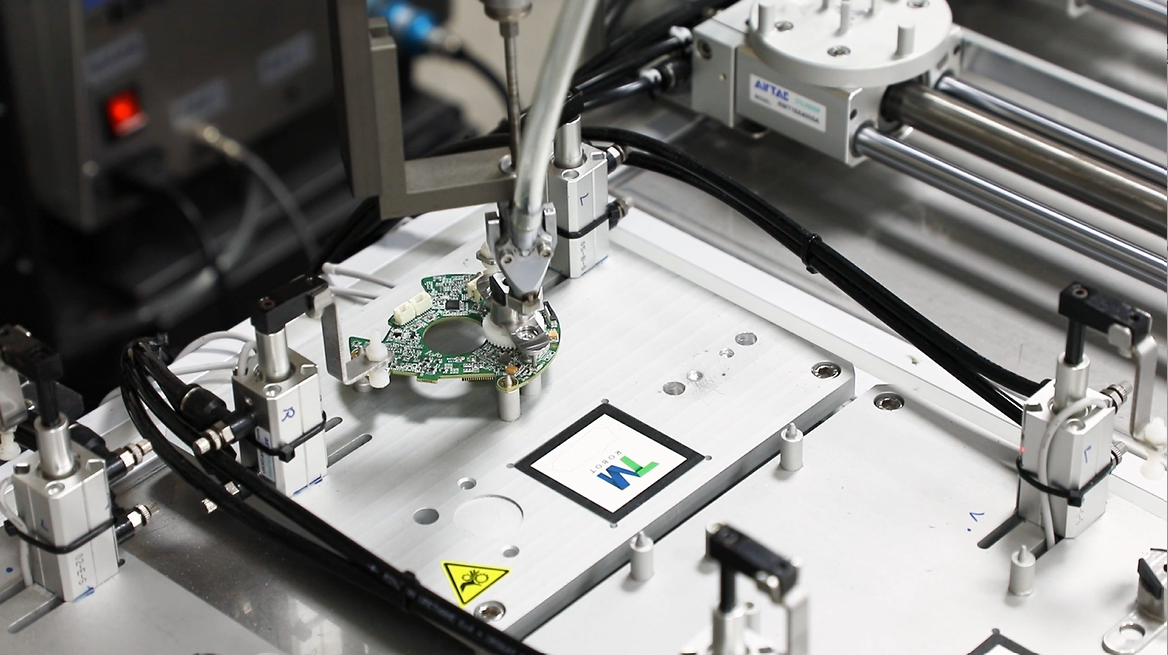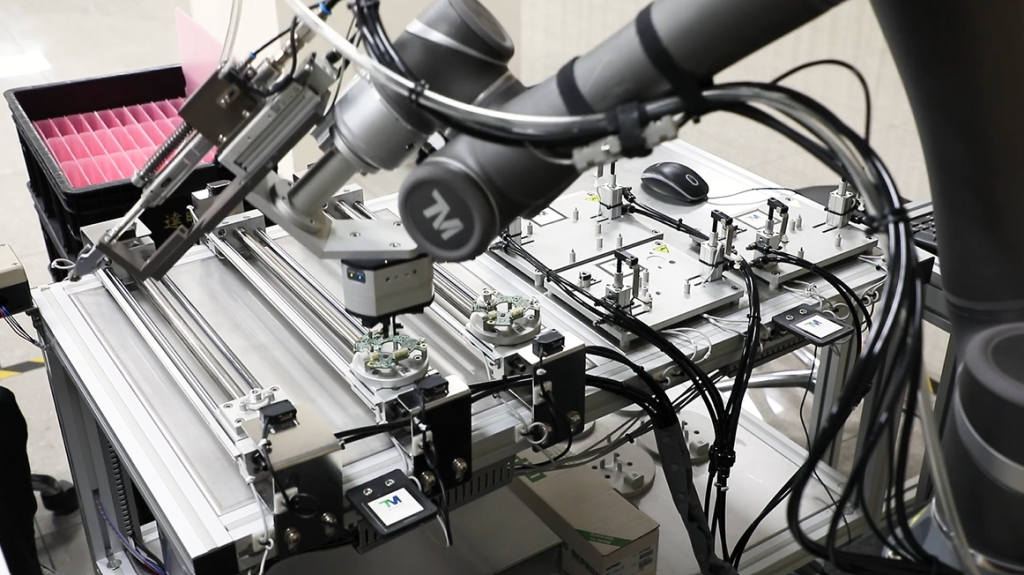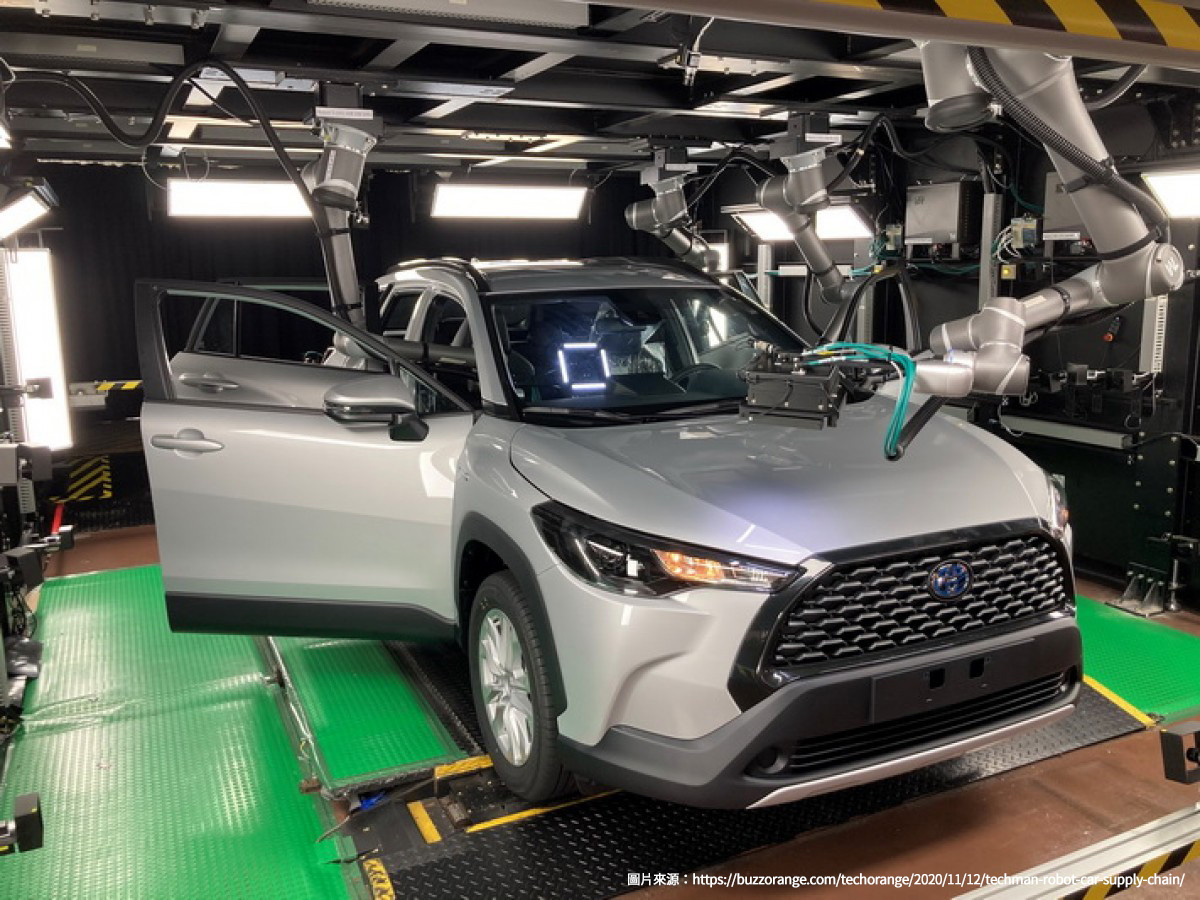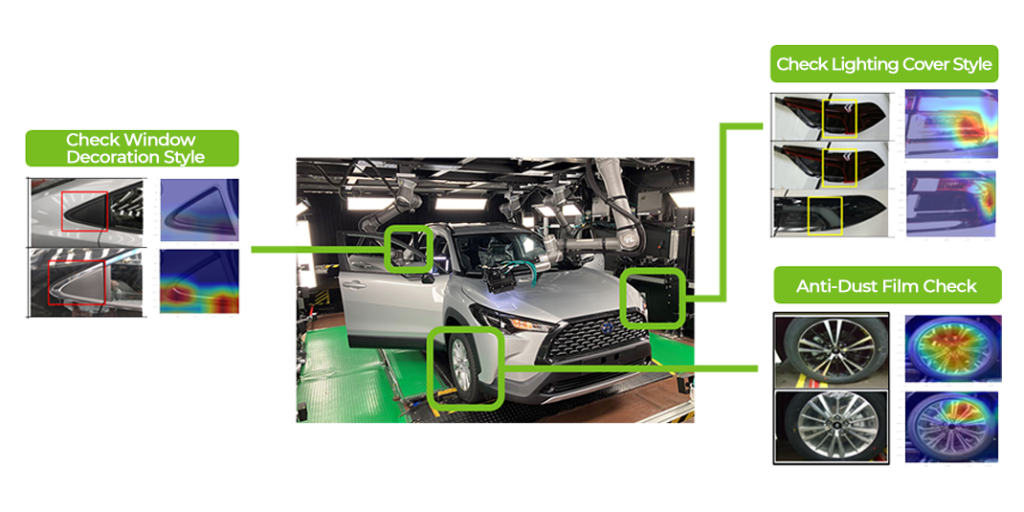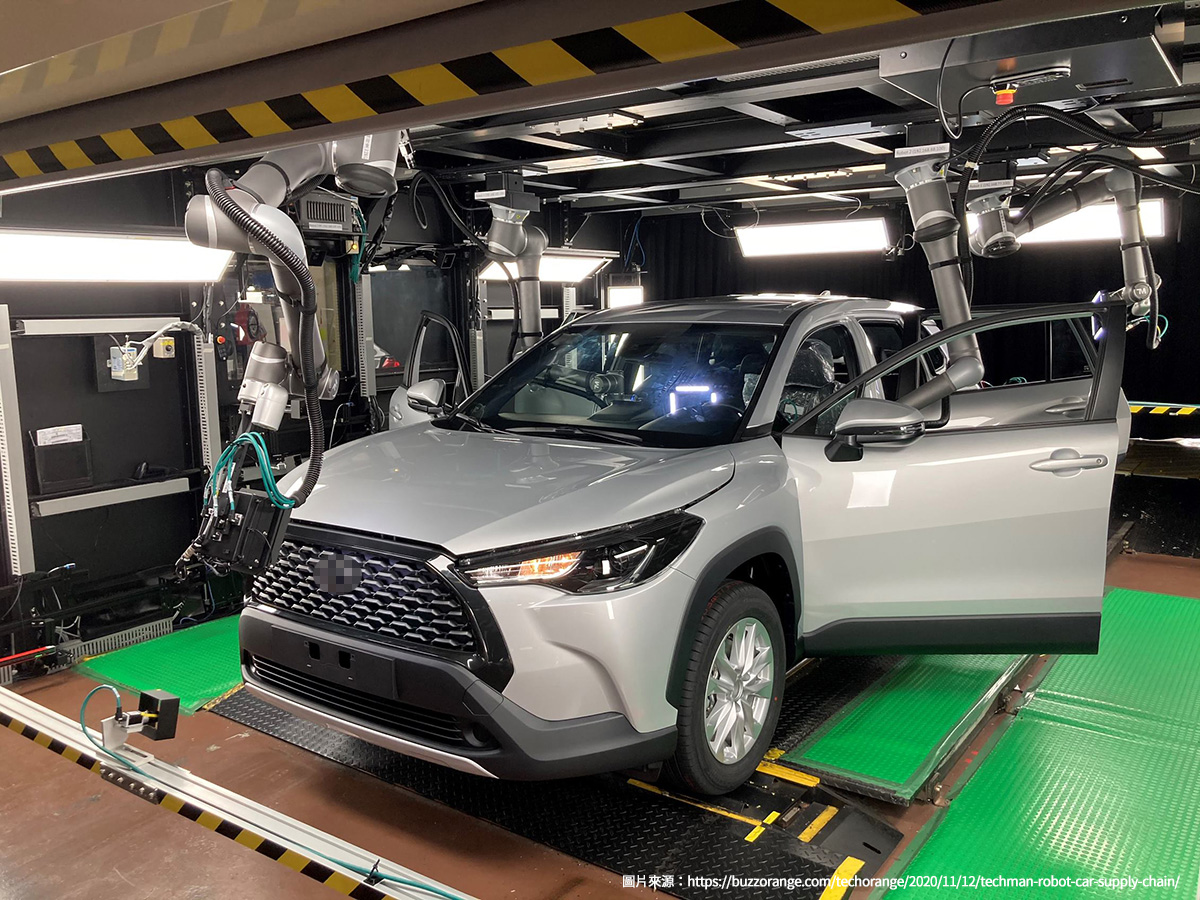“Packaging Cobots” or “Packing Cobots” have become key players in the industrial automation landscape, redefining the capabilities of “Packing Robots.” Designed to collaborate seamlessly with human operators, these cobots enhance productivity and safety across packaging operations. Offering a new dimension of flexibility and interaction, packaging cobots are crucial in modern manufacturing environments. This article explores how they transform packing robots through advanced integration, technological enhancements, and substantial benefits.
The Evolution of Packaging Cobots
The transition from traditional “packing robots” to more adaptive “packaging cobots” represents a significant evolution within the automation industry. Initially designed for specific, repetitive tasks within rigid operational confines, traditional robots required extensive safety measures. The advent of packaging cobots has transformed this landscape, introducing versatility and direct human collaboration into the packaging sector.
Moreover, packaging cobots have redefined safety and efficiency in manufacturing environments. Their ability to work alongside humans without the need for physical barriers not only enhances safety but also reduces the need for bulky machinery, freeing up valuable workspace. This evolution reflects broader industry trends towards increased flexibility, allowing businesses to swiftly adapt to changing market demands without significant downtime, ultimately streamlining production processes and improving responsiveness.
Comparing Packaging Cobots and Packing Robots
To fully appreciate the shift to packaging cobots, we must compare them with traditional packing robots across two key aspects: their nature and functionality, and their integration and safety.
1. Nature and Functionality:
- Packaging Cobot: These are collaborative robots designed to safely work alongside human operators without the need for extensive safety barriers. Packaging cobots are versatile, capable of performing a variety of tasks such as picking, placing, assembling, and conducting quality inspections with the help of advanced sensors.
- Packing Robot: Typically, this is a more traditional form of industrial robot requiring specific programming and maintenance by trained professionals. Packing robots are usually larger, faster, and designed for high-volume, repetitive tasks, often necessitating significant workplace modifications for safe operation.
2. Integration and Safety:
- Packaging Cobot: Easily integrated into human-centric workflows, packaging cobots are user-friendly and can be programmed by operators themselves. They include advanced safety features like force sensors to ensure a safe working environment, ideal for interactive operations.
- Packing Robot: Integration often requires significant layout changes and safety barriers to mitigate risks. These robots operate in restricted zones, optimized for efficiency but limited in flexibility and requiring careful safety management.
The shift from packing robots to packaging cobots represents a move towards greater flexibility and efficiency, enabling quicker responses to market changes and less downtime. This transition fosters safer and more collaborative manufacturing environments.
Key Advantages of Cobots in Packaging
Efficiency: Packaging cobots are pivotal in streamlining operations within modern manufacturing environments. By integrating cobots into packaging lines, businesses can significantly enhance their operational speed. These advanced machines are designed to handle tasks at a pace that far exceeds human capabilities, ensuring continuous production without the fatigue or inconsistency that can affect human workers. As a result, packaging lines are able to maintain a consistent output for longer periods, which optimizes throughput and minimizes bottlenecks in production.
Accuracy and Precision:
One of the standout features of packaging cobots is their incorporation of sophisticated vision systems. These systems enable cobots to perform tasks with high precision, which is crucial in packaging applications where exact placement and handling are necessary. Vision systems allow cobots to detect even minute discrepancies in packaging alignment, label placement, or product integrity, significantly reducing the risk of errors. This capability not only cuts down on waste but also ensures that all products meet strict quality standards before they leave the production line.
Flexibility:
The adaptability of packaging cobots is another key advantage. Unlike traditional robots, which often require extensive reprogramming and physical adjustments to switch between tasks, cobots can be quickly reprogrammed to handle different products or variations in packaging design. This flexibility is crucial for manufacturers dealing with seasonal products, multiple product lines, or rapidly changing consumer demands. It allows for swift product changeovers, reducing downtime and increasing the responsiveness of production lines to market needs.
Enhanced Vision Technology in Packaging Cobots
Integration of Vision Systems:
The integration of advanced vision systems into packaging cobots has revolutionized how these machines operate within the packaging industry. Vision systems equip cobots with the ability to see and interpret their environment with a degree of precision that mimics human sight. This technology enables cobots to perform complex tasks such as identifying product types, assessing quality, and precise positioning. The visual data collected is processed in real-time, allowing cobots to make immediate adjustments, ensuring high levels of accuracy in every action they perform. This integration not only enhances the cobots’ functionality but also significantly boosts their control over the packaging process, leading to smoother operations.
Benefits of Vision Inspection:
Vision inspection systems within packaging cobots offer a multitude of advantages, especially in terms of quality control. These systems allow cobots to consistently and accurately verify product details against quality standards. By doing so, they can identify defects, misalignments, or incorrect labeling before products reach the final stages of packaging. This capability drastically reduces the likelihood of faulty products reaching consumers, thereby safeguarding the brand’s reputation and reducing waste and rework costs. Moreover, vision inspection helps maintain a uniform standard of product quality, which is crucial for consumer satisfaction and compliance with regulatory standards.
Customer Story
Tung Pei Industrial Co., a prominent automotive bearing manufacturer, achieved significant improvements in production efficiency by adopting packaging cobots equipped with advanced vision systems. These cobots were deployed to conduct precise, automated inspections, ensuring that product quality met stringent industry standards.
The vision systems integrated into the packaging cobots allowed for real-time monitoring, checking each bearing for defects and inconsistencies. This automation reduced the need for manual checks, resulting in a smoother workflow and faster quality control processes. Following the cobot implementation, Tung Pei reported a 15% increase in production efficiency and a reduction in inspection errors by over 90%.
With their ability to complement existing systems, including the company’s packing robot, the cobots minimized downtime while keeping operations agile. Tung Pei optimized production, reduced labor costs, and maintained consistent product quality, ensuring customer reliability.
For more details, click here to read more about this solution.
Challenges and Solutions for Packing Robots
Integrating cobots into existing packing robot setups presents several challenges, yet with strategic planning, these can be effectively managed to enhance overall productivity and safety. Here are some common obstacles and solutions:
| Challenges | Packing Robots Issues | Solutions Provided by Packaging Cobots |
|---|---|---|
| Space Constraints | Require large, fixed spaces. | Our cobots operate in constrained spaces, minimizing layout changes. We assist in optimizing layouts to smoothly integrate cobots. |
| System Compatibility | Difficulties integrating with older systems. | We offer middleware to bridge gaps and technical support for system upgrades, ensuring seamless integration. |
| Workforce Adaptation | Resistance to new technology. | Comprehensive training programs are provided to enhance operation skills and safety awareness. |
| Safety Concerns | High risk when sharing spaces. | Cobots equipped with advanced safety features such as emergency stops and sensors ensure a safe working environment. We also conduct tailored risk assessments. |
| Cost of Implementation | High initial investment concerns. | We demonstrate the ROI of cobots through increased efficiency and reduced costs. Flexible financing options like leasing are available. |
By proactively addressing these challenges with practical solutions, companies can streamline the integration of cobots into their packing processes, enhancing flexibility, safety, and efficiency.
The Future of Packaging Automation with Packaging Cobots
As we look forward, the integration of packaging cobots in the packaging automation sector promises to usher in groundbreaking technological advancements. Expected innovations include advanced sensory functions, sophisticated machine-learning algorithms, and improved human-robot interaction, enabling cobots to perform complex tasks and expand automation possibilities. The growing role of packaging cobots is also anticipated to boost productivity across various industries such as pharmaceuticals and food and beverage, offering enhanced efficiency, reduced waste, and customized solutions. Their ability to quickly adapt to changing market demands with minimal downtime makes them invaluable in rapidly evolving sectors.
The impact of packaging cobots on automation is transformative, improving access, safety, and cost-effectiveness of automated systems. The continued adoption of cobots is expected to reduce operational costs, minimize downtime, and improve product quality, significantly influencing the future of industrial automation and reinforcing their role as key drivers of innovation and flexibility in manufacturing.
To learn more about how Techman Robot’s collaborative robots can transform your manufacturing operations, visit our website or contact us for a consultation.



